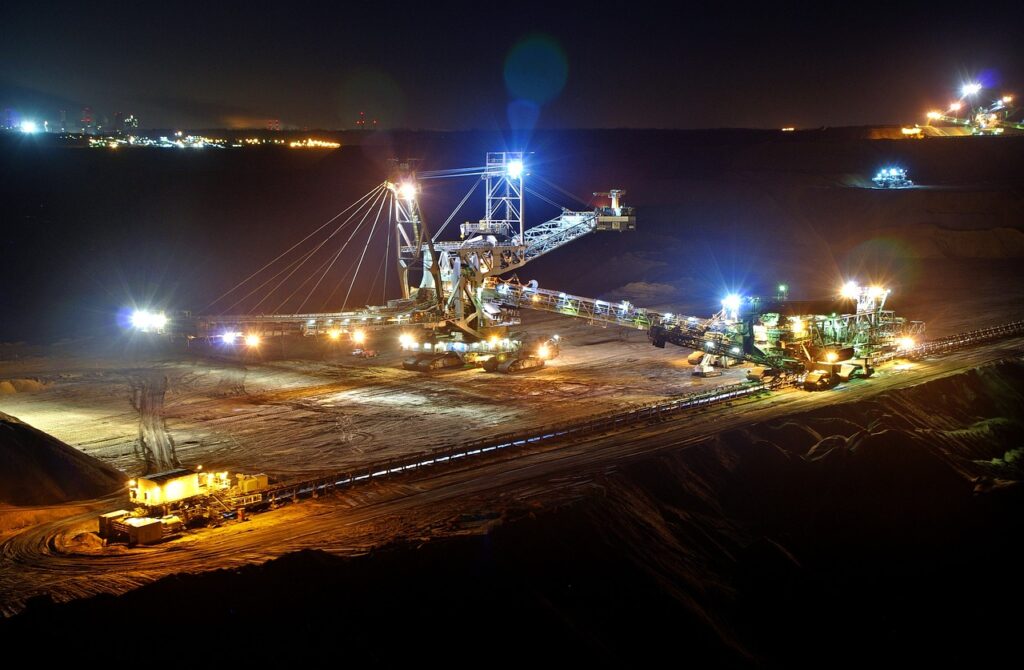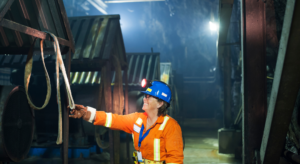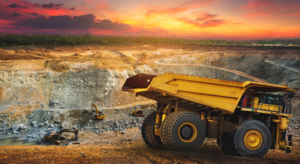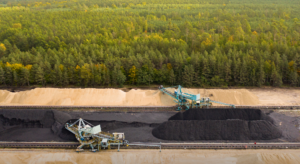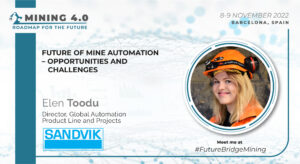The extraction of economic minerals from the earth’s crust relies heavily on a detailed understanding of subsurface geology. Geological modeling and ore body delineation are crucial to effective mine planning and profitability. However, traditional manual logging and analysis of drill cores is a time-consuming and subjective process. The adoption of automated AI systems for lithology identification in drill cores offers transformative potential. It enhances efficiency and accuracy in mining exploration.
Recent advancements in computer vision and deep learning are enabling the development of AI solutions. These can analyze drill core images and rapidly identify lithology, mineralization, textures, structures, and alteration. This is with consistency matching or exceeding human analysts. So, as mines work to digitize their operations and leverage big data, automating geo-analysis through AI promises significant benefits. It includes faster and lower-cost exploration, reduced risk, and improved resource modeling.
This article will provide an overview of how AI techniques like convolutional neural networks can be applied to automate lithology identification and classification in drill cores for the mining industry.
Automating Drill Cores Analysis: The Value Proposition
Drill core samples provide direct observational data about the structure and composition of rock beneath the surface. However, manually analyzing these cores is slow, costly, and introduces subjective variability between different geologists’ interpretations.
Automating aspects of drill core analysis with AI offers numerous potential benefits for mining companies:
- Increased efficiency – AI can analyze images rapidly. So, it can identify key mineralogy, textures, and structures without fatigue. It can also help with the consistency concerns of human analysts.
- Lower costs – Reducing the need for manual logging lowers exploration expenditures. Moreover, subjectivity is removed, enhancing drilling precision.
- Faster results – AI enables near real-time analysis and decisions vs waiting for manual logging. As a result, this aids rapid delineation of prospects.
- Reduced risk – AI provides consistent identification. It averts human errors or overlooking critical indicators. So, this de-risks exploration and development.
- Enhanced modeling – Systematic AI-based analysis provides higher-quality input data. This is for geological modeling and resource estimation.
- Improved safety – Automation reduces hazardous manual tasks. It includes core handling and underground drilling.
- 24/7 operation – Intelligent systems can continue working without downtime. As a result, it enables round-the-clock analysis.
By augmenting and enhancing human capabilities, drill core analysis with AI enables geologists to focus their expertise on higher-value interpretative tasks. They can also leave repetitive identification work to the technology.
Digitalization of Drill Cores with Imaging
First, digitize drill cores through imaging to apply AI techniques for automated analysis. Then, take high-resolution photos or scans of the drill cores, unroll them, and label them with depth, location, or other metadata.
Digital images enable software applications to process and identify key characteristics for each core segment. Moreover, multiple images can be taken along the length of each core section to capture details, defects, structures, or changes in composition.
Some leading practices for effective drill core imaging include:
- High-resolution photography for capturing fine details
- Multiple exposures to highlight variation
- Precise focus and consistent lighting to reduce shadows or glare
- Color calibration to ensure true-to-life representation
- Indexing images with depth, GPS coordinates, and other data
- Systematic processes for unrolling, cleaning, and positioning cores
- Conveyor systems to automate image capture
- Quality control checks to validate image usability
Efficient digitization and imaging maximize the potential value extracted by AI systems downstream. It also provides the indispensable raw material for training intelligent algorithms.
Convolutional Neural Networks for Image Recognition
Recent breakthroughs in AI have largely been driven by a technique known as deep learning. So, within this, CNNs have proven especially adept at analyzing visual data such as images or video.
CNNs take inspiration from the layered architecture of the human visual cortex. Furthermore, they are composed of specialized layers that filter inputs and gradually extract higher-level features. So, this enables the neural network to identify complex patterns and objects from raw pixel data automatically.
Some key characteristics of CNNs include:
- Alternating convolutional and pooling layers to filter and downsample data
- Dense neural connections pass information forward through the network
- Many hidden layers (deep structure) learn hierarchical feature representations
- Use of GPUs to massively parallelize matrix calculations and accelerate training
- Backpropagation to tune weights and reduce error across layers during training
For lithology classification, CNNs analyze drill core images in segments. They then recognize visual patterns indicative of different rock compositions, minerals, and textures. So, by learning distinctive features like color, grains, fracturing, weathering, etc., the deep neural network can categorize each image region into a lithology class.
When presented with new unseen images, the trained CNN can rapidly predict the lithology type. This is for each section based on its learned knowledge. Additionally, thousands of images can be processed nearly instantaneously to automate drill core logging.
Training a CNN on Drill Core Data
The key step enabling drill core analysis with AI is training a convolutional neural network model on relevant data. Furthermore, the training process uses labeled example images to tune the CNN’s weights until it reliably predicts lithology categories.
Data Collection
The first step is compiling a dataset of high-quality drill core images. These images should capture a diverse range of rock types, compositions, textures, and other lithological characteristics. The AI system will need to identify these. Additionally, collect images from across multiple drill sites and campaigns to maximize variability in the training data. Furthermore, gather thousands of images to provide sufficient examples for the AI to learn from.
Drill core images must be captured with careful attention. The focus should be resolution, focus, consistent lighting, color calibration, and indexing with metadata. It includes depth, location, and spatial orientation. Moreover, conveyor-based imaging systems can help automate and streamline the digitization process with quality control checks. So, the raw images provide the critical input data to train computer vision algorithms.
Data Labeling
Next, the drill core images are manually labeled by expert geologists. It indicates the lithology classes present in each image. Typically, images are split into smaller segments or patches, say 200×200 pixels. So, the geologists will assign labels to each patch denoting the type of rock, minerals, textures, or other attributes visible in that drill core section.
Data labeling is an intensive but crucial process requiring diligence and domain expertise to ensure label accuracy. Furthermore, thousands of image segments across various drill cores must be individually labeled. Moreover, verification from multiple geologists helps minimize errors or bias. Data augmentation techniques like image rotations, zooms, and distortions can be used. It artificially expands the dataset size and diversity.
The dataset produces each drill core image patch with associated labels, indicating the visual characteristics to be identified by the AI. Moreover, this transformed into the training input for the machine learning model.
Model Training
With the labeled image dataset in place, one can construct the convolutional neural network model and initiate its training. Through iterative training, researchers typically tune dozens of layered parameters in the CNN to optimize lithology classification performance.
The labeled images are passed into the CNN in batches as multi-dimensional tensors. So, as the images pass through successive convolutional layers, filters activate specific visual patterns. It includes edges, textures, color gradients, etc. Moreover, pooling layers periodically downsample the image representation. This is to consolidate features and also reduce computational requirements.
Multiple fully connected layers at the end map the extracted feature representations. It outputs categories matching the label classes such as various mineral or rock types. Moreover, key hyperparameters like layer sizes, activation functions, and regularization terms are configured based on empirical testing.
An essential technique called backpropagation allows the CNN model to automatically tune its internal weights. It improves prediction accuracy. For each image batch, the model compares the output predictions to the known labels to calculate error terms. Furthermore, it propagates these errors backward to adjust the model’s weights across every layer. It helps to reduce incorrect predictions.
This cycle repeats as large volumes of labeled images are passed through the network. Over thousands of iterations, backpropagation incrementally tunes the model’s convolutional and dense layers until it reliably predicts lithology based solely on raw input images. The model is then ready for validation and also testing.
Through this intensive training process, CNN builds an implicit knowledge representation. This is of the visual patterns and features characteristic of different rock types and also lithological properties.
The resulting optimized CNN model provides the core functionality enabling efficient automated analysis of drill core lithology. So, when integrated into upstream workflows, it can unlock major productivity and analytical advantages for mining exploration.
Optimizing and Validating the AI Model For Drill Cores
To ensure real-world effectiveness, one needs to rigorously validate and optimize the trained AI model. Moreover, testing should assess not just overall accuracy, but also false positive/negative rates, uncertainty, and performance on edge cases.
Strategies like cross-validation, confusion matrix analysis, misclassification review, and model ensembling can help strengthen model robustness. Furthermore, input from human geologists provides a critical perspective into model limitations.
Key aspects of CNN optimization include:
- Evaluating model accuracy across different lithology types – are some underperforming?
- Assessing the influence of image quality/variation – how does this impact predictions?
- Analyzing prediction uncertainty – are outputs clear or borderline?
- Using mesh grids to identify spatial patterns influencing classification.
- Comparing performance vs human analysts on an independent test set.
- Testing model on data from new geographic locations or drilling campaigns.
- Ensemble approaches combining multiple models to improve performance.
Continual revision and refinement of the model are necessary to meet accuracy requirements under real-world operating conditions. Moreover, responsible AI practices are important to avoid uncontrolled model degradation when deployed for drill core analysis with AI.
Deployment and Integration Considerations
To realize benefits, AI lithology models must integrate into existing mining workflows of drill cores. Moreover, cross-functional collaboration is key to ensuring solutions interface with core handling facilities, data platforms, and geological modeling software.
Critical activities include:
- Core imaging infrastructure and digitization processes
- Management of labeled training data
- Model deployment to field sites/drill rigs
- Seamless analysis data integration into data lakes
- Interoperability with GIS, 3D modeling, and estimation tools
- Adoption support through training and change management
- Monitoring model performance post-deployment
- Maintenance processes to refine the model over time
When effectively integrated, automated AI analysis can rapidly feed geological models, enhancing speed and precision. So, this requires aligning stakeholders, infrastructure, and workflows.
The Future Potential of AI for Geological Modeling
Automated lithology identification from drill core images is just the beginning. Moreover, advances in AI and computer vision will enable transformative capabilities for geological modeling and ore body knowledge:
- High-resolution 3D modeling of subsurface strata and structures from core data.
- Automated detection of veins, fractures, folds, discontinuities, etc.
- Real-time analysis and adaptive sampling to hone in on mineralization.
- Characterization of rock strength, hardness, and geotechnical properties.
- Integration with other data types – geochemistry, geophysics, tomography, etc.
- Time-series analysis of mineral deposit formation and genesis.
- Probabilistic modeling of mineral prospectivity potential across regions.
- Data fusion and cross-validation to reduce drilling requirements.
The future of exploration will leverage AI. It will also rapidly extract insights from multiple data sources, generating high-fidelity 3D models while requiring fewer drill holes. As a result, this transforms mining economics and sustainability.
To Sum Up
Automating lithology identification in drill core analysis with AI stands to unlock tremendous value through faster, lower-cost, lower-risk exploration. Recent breakthroughs in computer vision and deep learning enable AI systems to reliably classify rock composition, textures, and structures from images. So, to capitalize on these advances, mines must focus on effective digitization, training sound machine learning models, and integrating AI seamlessly into their core handling and geological workflows.
With responsible implementation, AI automation will become a critical force multiplier enhancing geologists’ capabilities and transforming modern mining. The 5th Mining 4.0: North America 2024 on 10-11 April in Toronto, Canada will be an excellent opportunity for industry leaders across operations, technology, exploration, and sustainability to come together and share their vision, successes, and challenges with AI and automation across the mining value chain and lead the revolution of modern mining.

